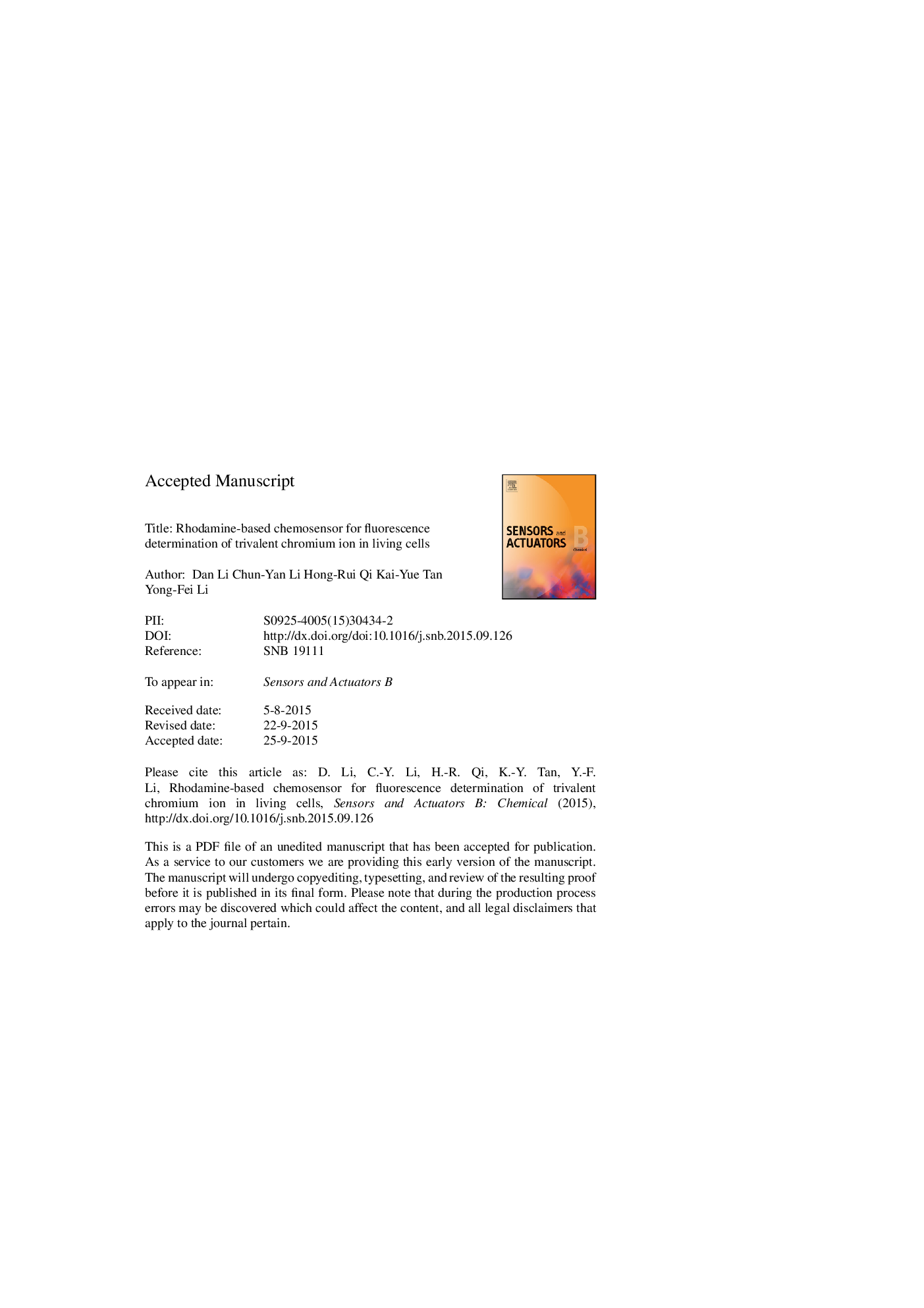| Article ID | Journal | Published Year | Pages | File Type |
|---|---|---|---|---|
| 7145626 | Sensors and Actuators B: Chemical | 2016 | 38 Pages |
Abstract
A rhodamine derivative (1) is developed as a fluorescent chemosensor for trivalent chromium ions (Cr3+). It exhibits a highly sensitive “turn-on” fluorescent response toward Cr3+ with a 55-fold fluorescence intensity enhancement under 2Â equiv. of Cr3+ added. The chemosensor can be applied to the quantification of Cr3+ with a linear range covering from 5.0Â ÃÂ 10â7 to 2.0Â ÃÂ 10â5Â M and a detection limit of 1.7Â ÃÂ 10â7Â M. Most importantly, the fluorescence changes of the chemosensor are remarkably specific for Cr3+ in the presence of other metal ions, which meet the selective requirements for practical application. Moreover, the response behavior of 1 toward Cr3+ is pH independent in neutral condition (pH 6.0-8.0). The response of the chemosensor is fast (less than 2Â min) and the chemosensor is chemically reversible. Furthermore, the ring-opening mechanism of the rhodamine spirolactam induced by Cr3+ and the 1:1 stoichiometric structure between 1 and Cr3+ were supported by Job's plot, NMR, MS and DFT theoretical calculations. In addition, the proposed chemosensor has been used to detect Cr3+ in real water samples and image Cr3+ in living cells with satisfying results.
Related Topics
Physical Sciences and Engineering
Chemistry
Analytical Chemistry
Authors
Dan Li, Chun-Yan Li, Hong-Rui Qi, Kai-Yue Tan, Yong-Fei Li,
